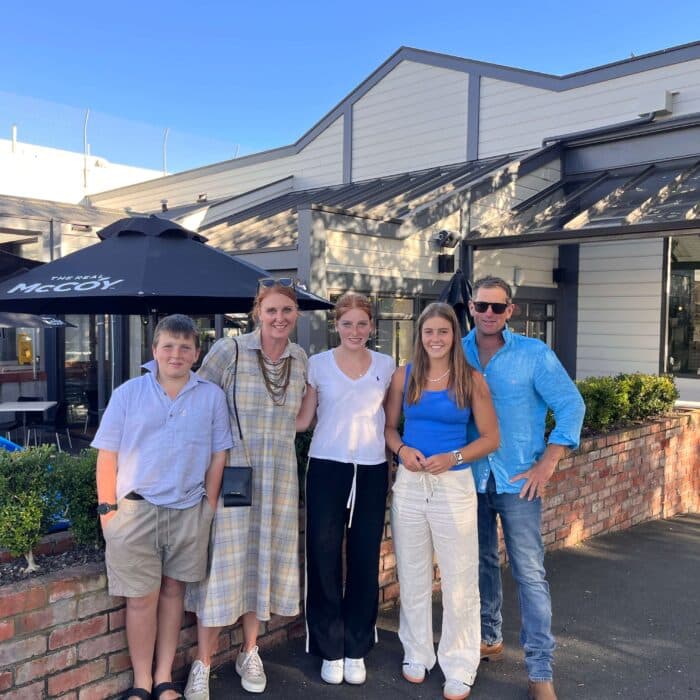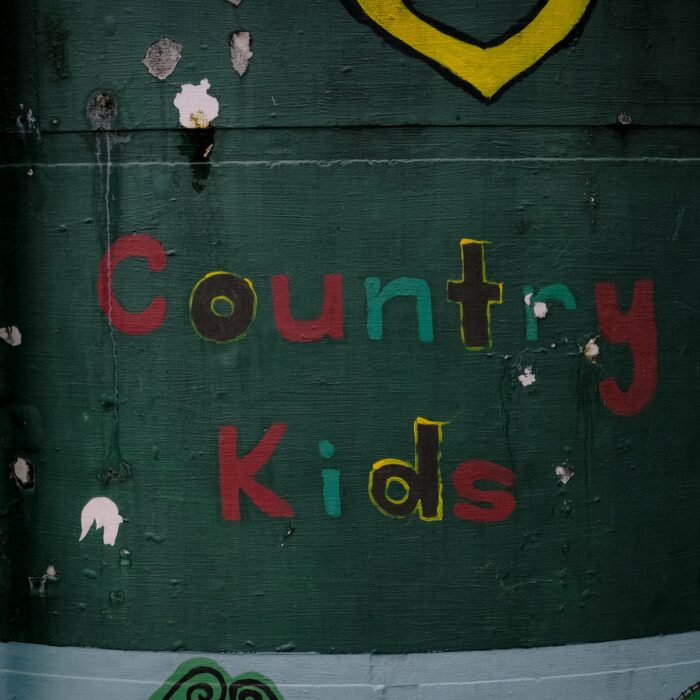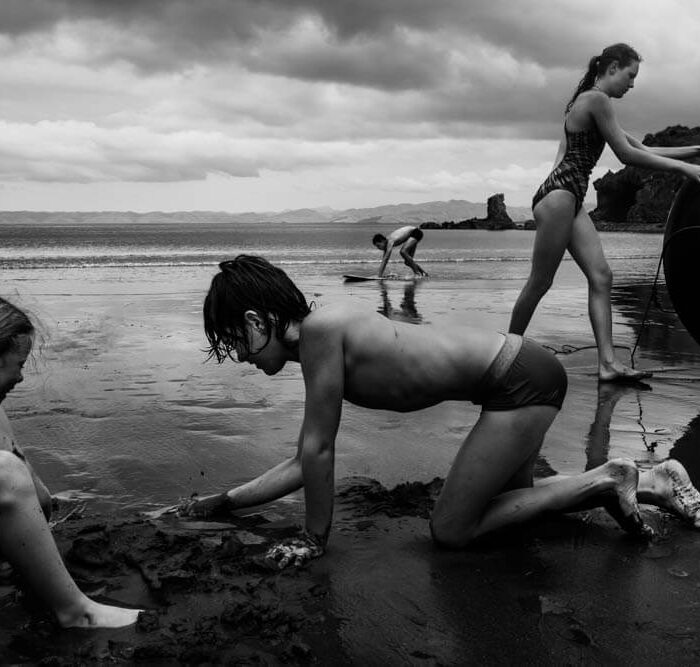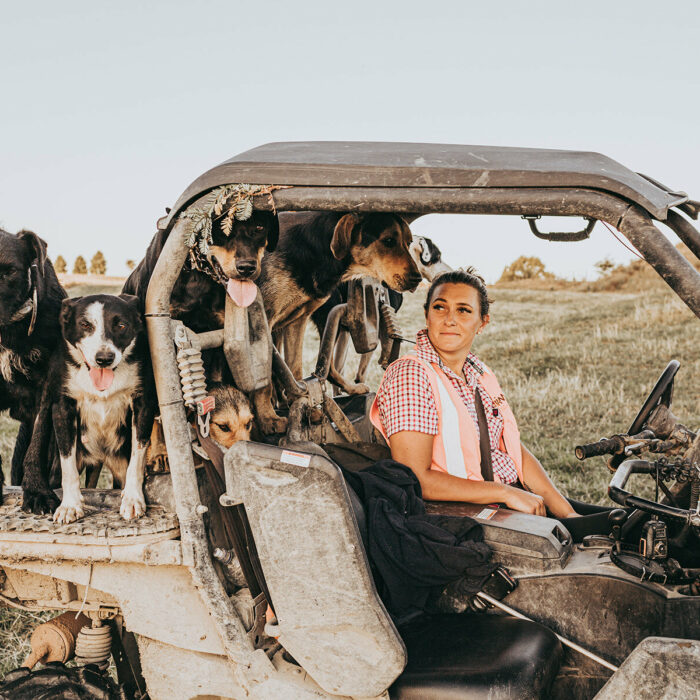23 September 2022
Books, art, friends: how downsizing to a tiny home following a relationship breakup has led to a refocus on life’s great pleasures
WRITER: FELICITY CONNELL
PHOTOGRAPHER: CHARLIE HIGGISON
A relationship breakup meant that Sina Holden, 37, had to be creative in finding a new home in rural Mahana where she and her children, Maia, 11, and Lucia, 10, lived – and where they wanted to stay. The solution she found comes with some surprising benefits.
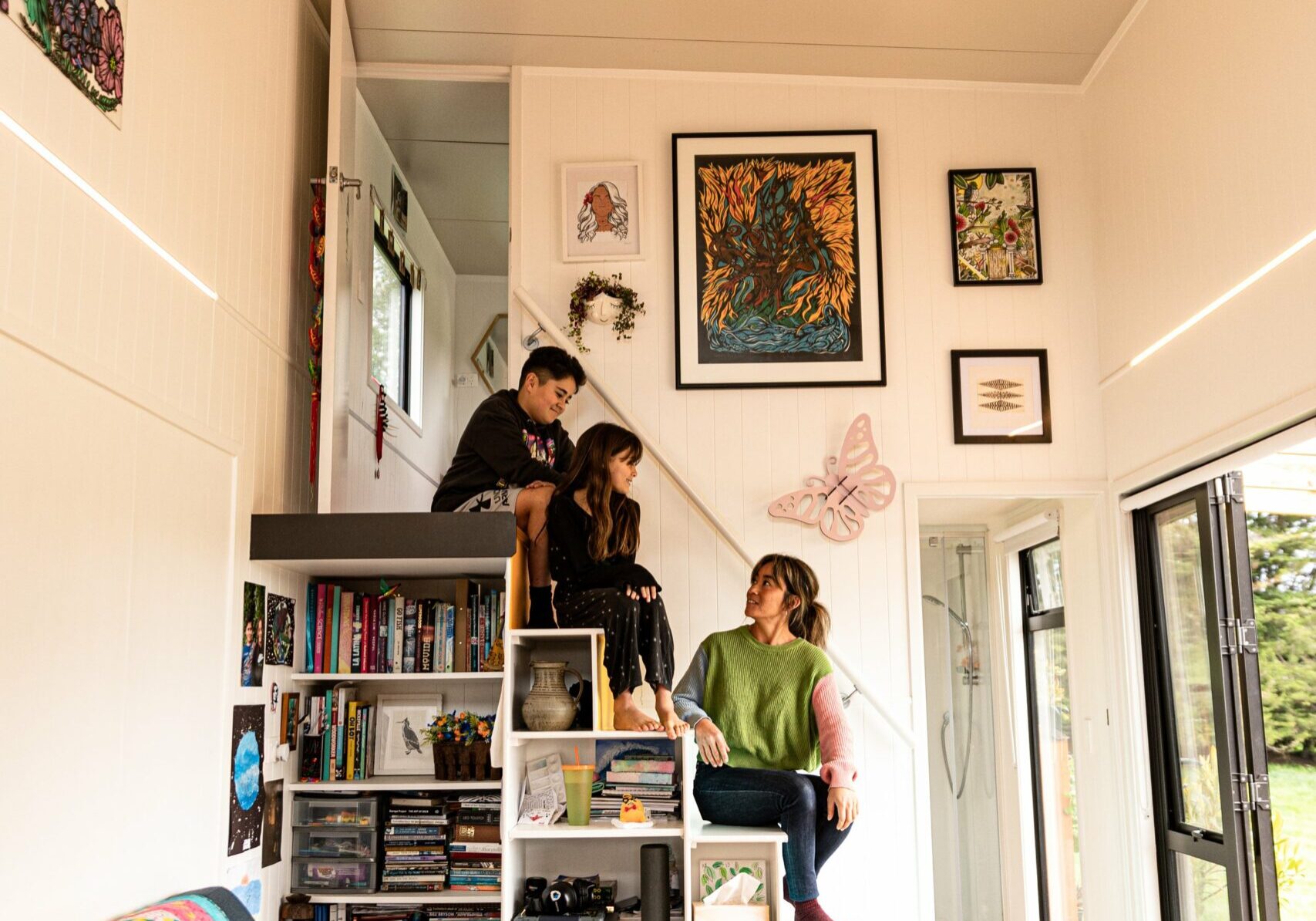
Sina’s home in Mahana, about half an hour out of Nelson, has a vibe of love and creativity. The brightly painted stairs leading up to Lucia’s room, colourful art on the walls and books stacked on shelves say a lot about what the family hold dear. And while it may not sound too different to your typical family home, there is a big difference with this house: it’s rather small! With a thirty square metre footprint, the two-storey transportable home has floor space of forty-five square metres – about a third of the size of the average new-build home.
After her relationship ended in early 2021, Sina needed to find a new home, ideally in Mahana. “Maia and Lucia were settled at Mahana School, we all have good friends here and a lifestyle we enjoy,” Sina says. But finding a new place to live in the area within her budget wasn’t easy. “We’d been living in a three-storey house on a sixteen-hectare property. House prices had gone up since my ex-partner and I had bought it, so although we had good equity, the strong housing market meant that other houses in the area had also gone up in price. There wasn’t enough money for both of us to buy a new house,” Sina explains.
Renting wasn't an option. "There aren't a lot of rural rentals available. The ones I found were expensive, and were in areas where the kids would have needed to change schools. Plus we have a dog and chickens, which narrowed our choices even further."
Sina knew of the tiny-home movement through social media. "I'd been watching a tiny-house channel on YouTube. Then I started seeing promotions for Ruru, a local company. Because they were based near us, we were able to go and check them out. We quickly realised it was a solid option for us. The one we were looking at was within my budget, well-built and designed, insulated, double-glazed, and relatively big for a 'tiny' house. Even though we had yet to sell our other house, I had enough equity and was in a position to buy. Fran from Ruru said, 'Well, you can have this one.' It turns out that it was their very first build, which is cool. All it needed was to be plugged into power and water, and it was good to go. The kids and I named her 'Pepe,' which is Samoan for butterfly and baby - reflecting a new beginning for us."
Finding somewhere to locate Pepe was the next challenge. "I have lots of friends with space to host a tiny home, but they were nervous as they weren't sure about what implications having a tiny home on their property would have from a local-council perspective. I understand the Tasman District Council is looking at updating the by-laws to make it easier to have tiny homes on rural properties, which will be wonderful," Sina reflects.
Eventually, Sina's friends Alice and Luke said, "Why not - let's try it," and offered a space for Pepe on their farm. Their two daughters are the same age as Maia and Lucia, and go to the same school. On a rise, with a view across paddocks and over an area of future wetland, where Sina has helped plant out hundreds of native plants, it provides a tranquil setting for the family and plenty of outdoor space for their dog, Marley. At the end of a long driveway, and located out of sight of the main home, Sina and her family have a perfect mix of space, privacy and social connection. They made an initial agreement to trial it for a year; now, nearly two years in, it's proven to be a positive arrangement for both families
"We talked about it recently, and agreed that all our lives are better with having each other in it. Living rurally, especially as parents with young children, it can be hard to socialise, you can't just walk to your neighbours like you can in the city. Here, we have friendship and kinship. We share meals together. Our children bus together to school and play with each other after school - they roam between both houses. Alice and I support each other with childcare, and I help her out on the farm."
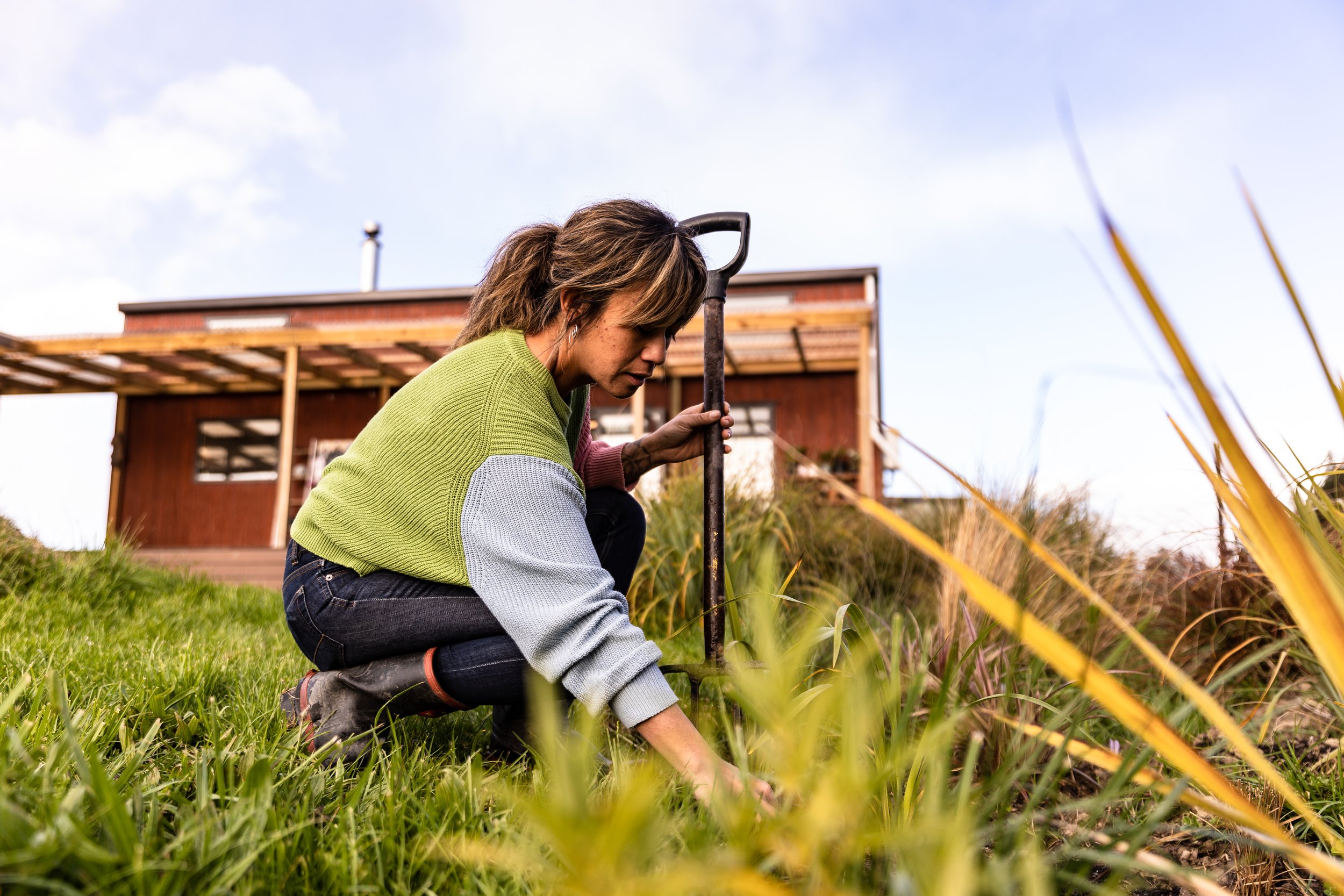
As Pepe is less stable than a traditional house with fixed foundations, the first year was a learning curve for Sina in terms of how the unit would sit on the land and cope with rain and strong wind. Having been through a full cycle of seasons, she's now more confident in Pepe's robustness. The first winter was a test of the new way of living, too. "We're close as a family and generally we don't feel like we are in each other's spaces at all. However, the first winter was a little claustrophobic as we didn't have the deck or the cabin then, so it was just the three of us inside all the time. But giving each other space, cleaning as we go, and visiting family and friends were all ways we got through," Sina explains.
She has since adapted the original design. "There were two sets of French doors on either side, which is great for light, but meant that we had reduced wall space for art and less storage space. Eight months after we moved here, we sold our previous house, which released a bit more money. I was able to work with a local company, Craftworx, to add a deck with a roof and build a cabin. I asked the builders to take out one set of French doors and re-use it in the cabin. We've now gained more internal wall space, Maia has his own room, and we've got almost forty square metres of extra living space outdoors."
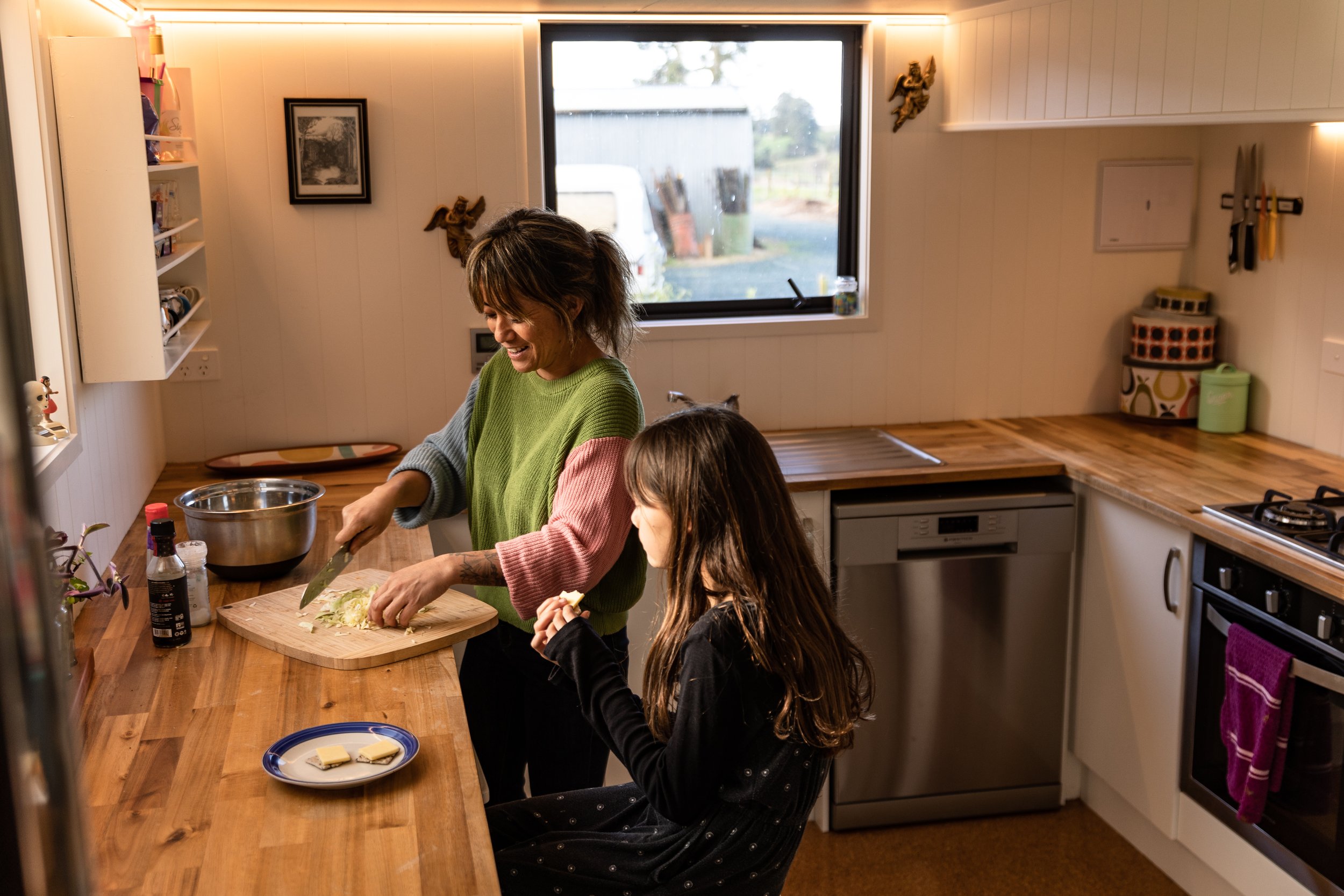
"We've actually become friends with the people that bought our old house, and we don't feel any sadness or miss it at all. It's funny, when we lived there the kids shared a room because they didn't like being on their own at night. It took moving to a smaller home for them to gain the confidence to sleep in their own rooms," Sina says.
Living small hasn't cramped their social life, either. "We still have a ridiculous number of children coming over. For Lucia's birthday we had eight children stay the night. I think it must have been a world record for tiny house sleepovers," Sina laughs.
"I am absolutely amazed at how the kids have managed. They've never been 'stuff' kids - they're books, friends and playing kids. We've always been relationships people, we all get joy out of being around people. So they have everything that they need, and they love it."
Sina has had to come to grips with the practical side of living in a transportable home. "There's no sewage system or water pipes for grey water. So I manage and maintain all of that myself. They're not big jobs, but little jobs done often. The children help out with things like splitting wood for kindling or emptying the composting loo."
The family make a point of using eco-friendly grey-water products. "I know how much water we use and what's in that water. I know what goes into the loo, and what comes out, too! You're much more aware of the direct impact you have on your environment," she says. And Sina has found it empowering doing her own maintenance. "In traditional houses, because its more complex, if something goes wrong, you have to bring in a plumber or an electrician. Here it's simpler and cheaper and easier to maintain yourself. I've discovered I enjoy being practical and fixing things."
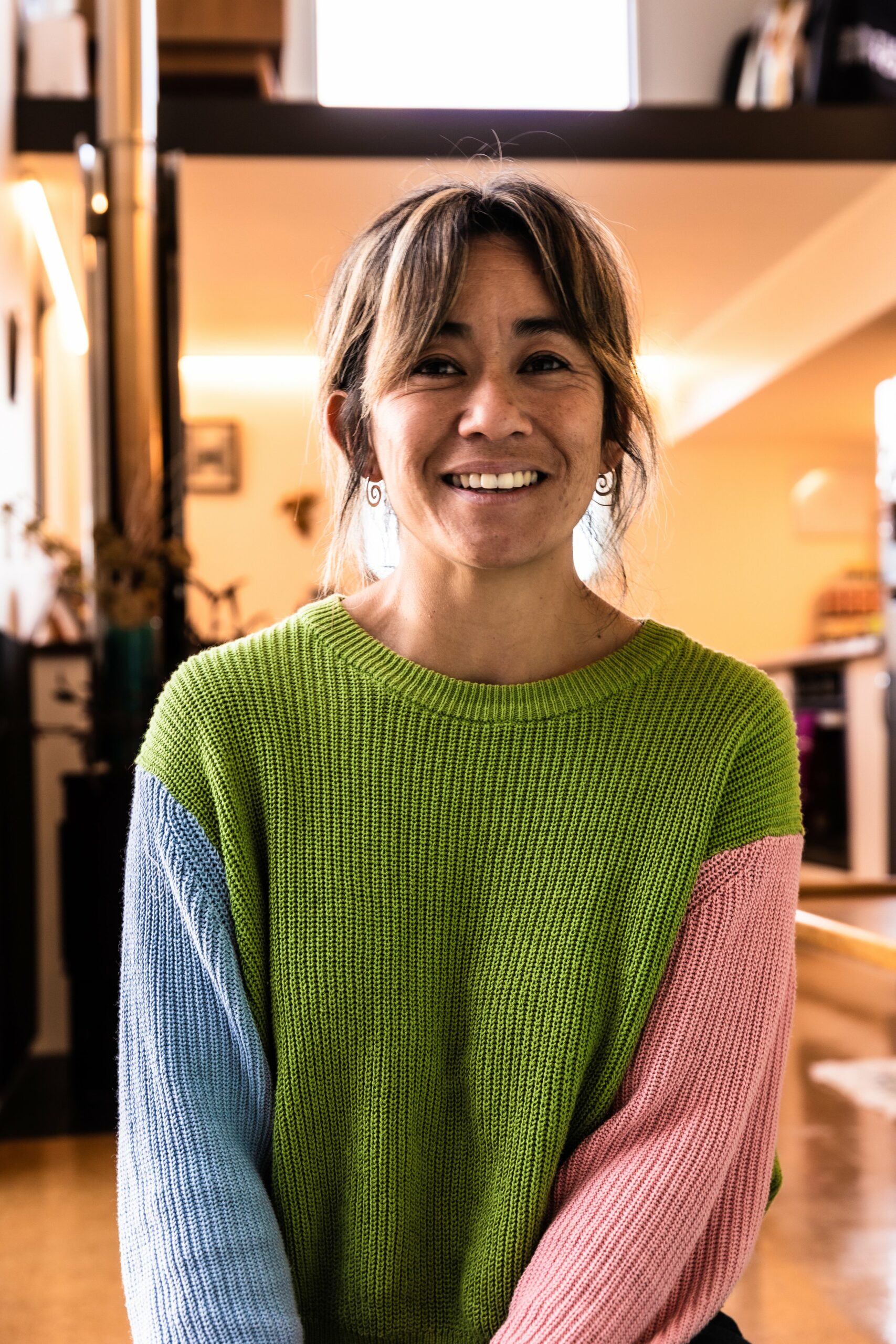
Moving to a smaller, easier to maintain, physical space has given her more headspace. "I think a big part of the draw to a transportable dwelling is its size. There's less to attend to, and everything feels so much calmer. The cleaning is much more manageable than a three-storey house! I have more time to myself, just thinking and looking out over the land. I don't watch anything on screens anymore because I just enjoy being in the moment. Having less stuff is incredibly freeing. Living here, you realise what is essential in life, and that is just us really. And keeping warm and fed and happy with our books and art."
Now they've seen how well it works for Sina and Alice and Luke and their families, people have been getting in touch to see how they might make living in a tiny house work themselves, and more of their friends are interested in sharing their land with people in temporary dwellings. "Since we have been here, our other friends don't feel so stressed about the council stuff. There's now at least four Ruru tiny homes based in Mahana. I've had a few single woman and solo mums ask me whether it could be an option for them, and I've always said yes. But my strong advice is to make sure you know where your tiny house is going to go before you buy, as it can take longer to find the right spot than you think. I know some people who have got themselves in tricky situations when they don't have the land side sorted."
Their new lifestyle has had an impact on Sina's wider family, too. "It's changed the way our family buy gifts for the children. My mum and dad love giving them presents, and used to buy them loads of stuff. But now their mind-set has changed and they give vouchers for things that they can do together - it's the gift of experiences and time together."
For all the positives, there are some downsides. Sina's bedroom is on a mezzanine floor, so she doesn't have a lot of privacy. And despite all the minimising, she jokes, "I've got too many clothes for a tiny house and I'm always saying I need a tiny, tiny, tiny house for my clothes, and I need a tiny, tiny, tiny library for all our books." She'd love to be able to plant some more permanent trees, and she's unsure how tiny living is going to work as the children become teenagers.
The temporary nature of their living arrangements and uncertainty over the future has caused Sina anxiety at times. But it has also meant that she is more at peace with uncertainty, and is also reshaping what 'ownership' means to her. "I don't have enough money to buy a traditional house again, and I don't think I'll ever be in a position to own land. But I'm okay with that now. I've realised you don't have to own something to feel settled and connected. I feel we're actually living a more connected life. We're connected to each other, the children and I, and our dog Marley. We're all connected to Alice's family. And then, we are all connected to the land by managing it and looking after it and making a beautiful place to live."

This story is part of THREAD, a year-long project by Shepherdess made possible thanks to the Public Interest Journalism Fund through NZ On Air.
If you enjoyed this story, please share with someone else.
Get your hands on a copy of Shepherdess.
Related Stories
Moments, Raumati Summer 2023/24
I will always love the way kids can amuse themselves for hours and hours with their surroundings and a few simple items.
